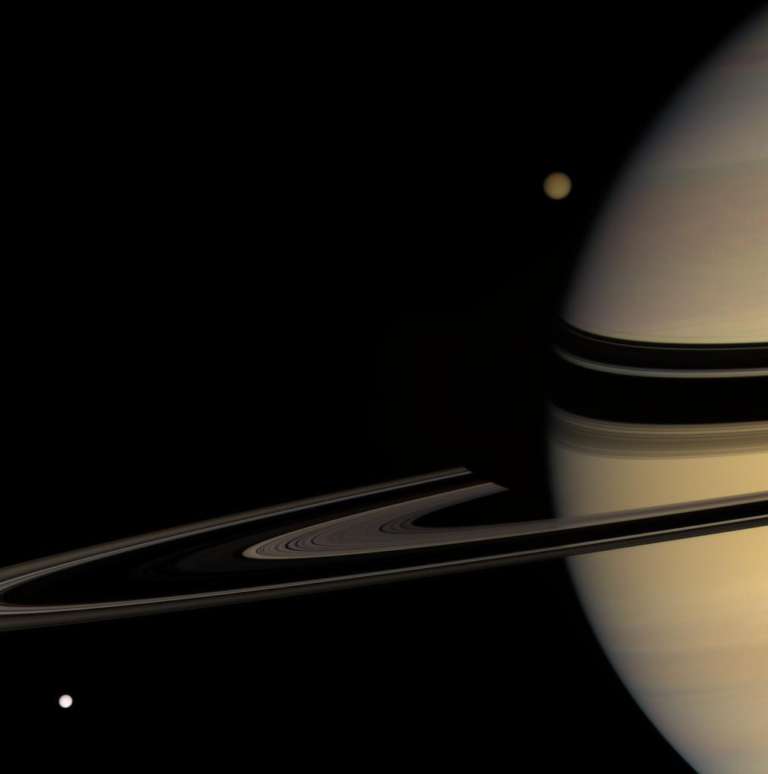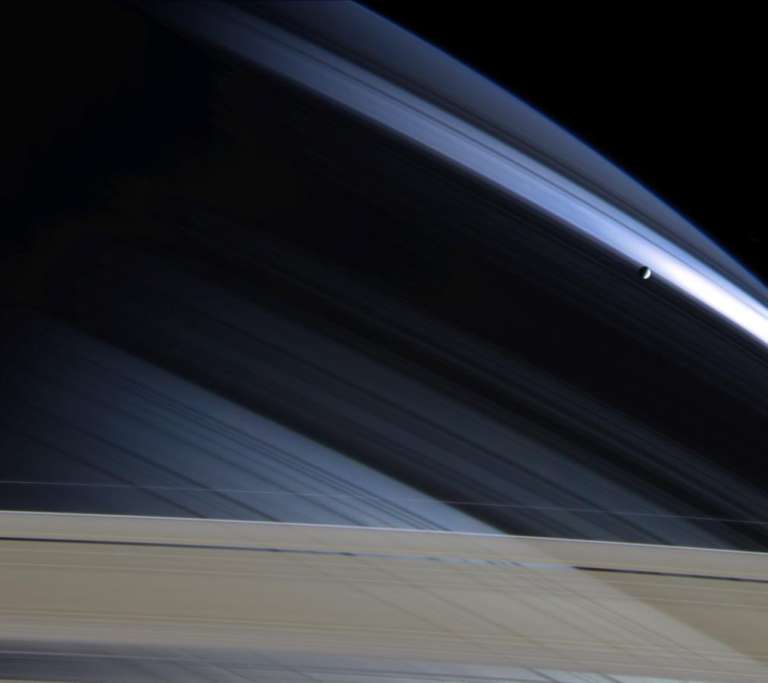Emily Lakdawalla • Mar 25, 2008
Saturn, Tethys, and Titan
I thought that today's image release from the Cassini imaging team was exceptionally pretty:

When Cassini catches many of the worlds of the Saturn system in one camera frame, you can readily understand how the brightnesses of different bodies in the system differ. Tethys, like Dione, Rhea, Enceladus, and Mimas, is an ice-covered moon, and is really very bright, and becuase Tethys reflects light pretty strongly at all visible wavelengths, it appears white. The atmospheres of Titan and Saturn are much dimmer, swallowing up more of the solar radiation that hits them, and they preferentially reflect more longer-wavelength than shorter-wavelength light, giving them an orangish cast.
The changes of Saturn's colors with the seasons are pretty interesting, too. It would be fun to dig into the Cassini archives for pictures of Saturn over time that show how the ring shadows have been moving south, and the northern hemisphere getting less blue, over time. Here's a photo from early in Cassini's mission to show you the shocking blue color that the northern hemisphere had when Cassini first showed up. I wonder if Cassini will last long enough at Saturn to see the same color develop in the south?

The Time is Now.
As a Planetary Defender, you’re part of our mission to decrease the risk of Earth being hit by an asteroid or comet.
Donate Today

 Explore Worlds
Explore Worlds Find Life
Find Life Defend Earth
Defend Earth

